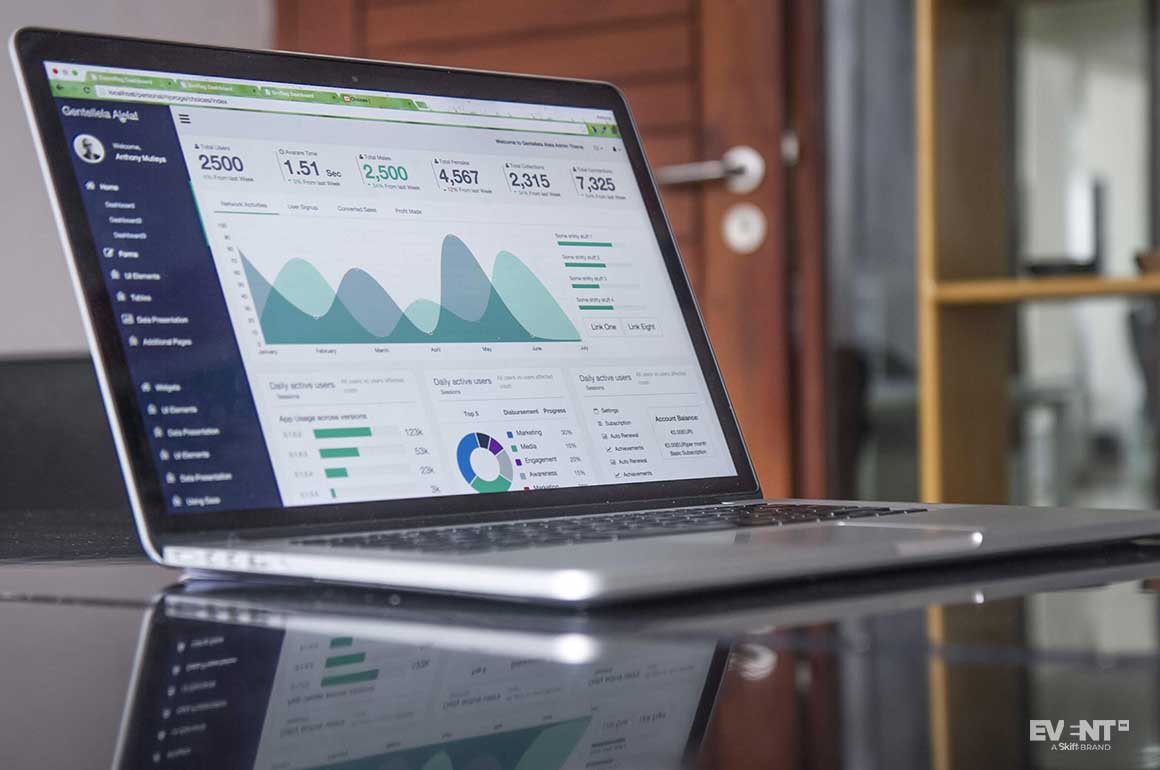When it comes to the buzz around virtual events, most of the focus has been on giving audiences easier, more affordable access. And in turn, this means a wider reach for event organizers. What is often overlooked, however, is how all of this online connectivity translates to a trove of data that can be mined for marketing insights.
In the past when in-person events dominated, most hard data came down to simple ticket sale numbers. Post-event surveys were one of the few tools that allowed event planners to measure attendee satisfaction and engagement, and hitting on the right questions to ask was challenge enough, never mind actually getting attendees to answer them.
By contrast, virtual event platforms will automatically track user behavior in ways that reveal true engagement levels. As hybrid and other in-person event formats begin to return, will event planners have to continue providing this level of visibility to justify their access to marketing budgets?
Virtual Events Set the Standard for Event Data
Even before the pandemic, event planners were faced with a double-edged sword: As they became increasingly valued for their marketing potential, events took a larger share of corporate budgets, and with that, more pressure to substantiate their ROI.
Most marketing departments are now used to evaluating their digital advertising strategies using rigorous data analysis. And like pay-per-click ads, virtual events provide a wealth of data on click-throughs, page visits, and video views. The more robust platforms will even track which users are the most active, and for how long.
This information can be incredibly valuable for market segmentation. Engagement data can help determine which types of content are most likely to appeal to each subsection of the audience. And at trade shows, this knowledge can help to qualify the most promising leads for exhibitors and sponsors.
For corporate events or product launches, event planners can use engagement metrics to substantiate the impact of their brand awareness efforts.
But if this data suggests that virtual events are highly successful at achieving stakeholder objectives, will marketing departments want to risk the higher upfront investment required to host in-person events?
Why Data Matters for Face-to-Face Events
Nick Borelli, Director of Marketing Growth at Allseated, raised this very issue when he spoke to EventMB for The State of the Event Industry virtual event. Borelli worries that C-suite marketing teams may lose confidence in the value of face-to-face events as they gradually learn to live without them.
He likens the dilemma to an A/B test that measures onsite events against all the alternative marketing options available. According to Borelli, some event planners might not have collected enough data to defend the ROI of face-to-face events while they were still thriving.
“I’m concerned about organizations who were initially on the fence about investing in face-to-face events but began adopting them over the last five years — they might go backwards now. They’ll have a year or two of not having those events, which gives them half of that A/B test. If they do well, then they will adjust to the lack of spending and avoid the risk that comes with face-to-face events.”
Nick Borelli, Director of Marketing Growth, Allseated
Given that hybrid events are forecast to dominate in the third and fourth quarter of 2021, however, event planners may soon have an opportunity to make up for this past oversight. The hybrid event of the future will make use of event tech to enhance the in-person experience as much as the virtual one — and where there’s a digital connection, there’s the opportunity to collect data. Even survey questions can be timed to correspond with the most relevant stage of the event. For example, attendees could be asked to rate a session just as it ends.
With that said, there is unquestionably a strong appetite to return to the in-person experience. In particular, trade show exhibitors and sponsors have noted that virtual events have yet to match the networking and lead-generating potential of face-to-face experiences. Still, many of those same critics recognize the potential to build brand awareness through the larger reach of virtual events. And they have the data to prove it.
In fact, the biggest complaint EventMB heard from sponsors was that their own branded virtual events had just as much marketing value as trade shows — not that virtual events were a non-starter in and of themselves.
IN CONCLUSION
The normalization of virtual events has meant that event stakeholders are now accustomed to the analytics that go along with them. Event platforms have rapidly adapted to meet new demands and technology is accelerating at an unprecedented pace. And so far, EventMB’s sources claim that virtual events are meeting (or exceeding) expectations.
With the return of hybrid events, planners may have to ensure that just as much data is collected about the in-person experience. If event planners want to shift the focus from possible losses to potential earnings, they need to gather enough data to prove the ROI of in-person experiences.





